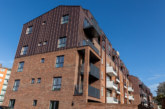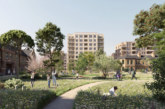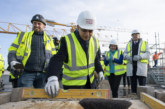Paul Olliff, Legal Director for Ashfords LLP Real Estate, reports on the growing phenomenon of airspace development as a practical solution to meeting the growing demand for new and affordable homes.
Just last month, London Mayor Sadiq Khan agreed a loan to Apex Airspace which will see 500 new homes built above existing ones or over stations, offices, shops and car parks, half of which will be affordable. This is the first time her has supported an ‘airspace developer’. Apex builds the new homes in factories and, when they are 95% complete, installs them on roofs, minimising disruption for those in the properties below.
But as with all emerging technologies, there are plenty of both legal and practical considerations to be taken into account before you start reaching for the stars.
The first – and most obvious – question to ask is: what’s already on top of the building and any challenges this might present. Lift housing is capable of shifting and air conditioning units may need re-routing.
Other initial investigations should take into account the structural integrity of the building, any existing issues with neighbouring properties, party walls and main services into the building. Obviously if you are adding extra footfall into the building you need to establish that existing main services have capacity and are located in such a way that they can actually serve the new development. For almost everything there is a solution, but usually at a cost.
If there are residential tenants, do they have a first right of refusal to the development under the 1987 Landlord and Tenant Act – which means they must be offered the airspace lease on the same terms as those being offered to the developer? If first right of refusal isn’t given, you run the risk of criminal sanctions as well as fines.
The structure of the legal agreement also needs approaching carefully, depending on ownership and the parties involved. These will range from an Options Agreement with the lease incorporating development rights through to Conditional Contract and purchasing the freehold of the building.
Option agreements usually allow more flexibility for the developer. If it has leaseholder development rights, careful consideration needs to be given to both parties. The landlord will want to ensure the fabric, structure, foundations and rights of other tenants are not interfered with, while the developer will want to ensure it can actually get on with the development efficiently and without too much hassle.
Leasehold development rights should also take into account ancillary rights such as scaffolding, parking spaces and access to retained land. The landowner will likely want an indemnity clause in case anything goes wrong.
In summary, while airspace development is undoubtedly a positive way forward and should be welcomed by local authorities, there are a whole range of legal issues that could get in the way in the initial stages. So, make sure you strap on your legal parachute before you go up into the clouds.









